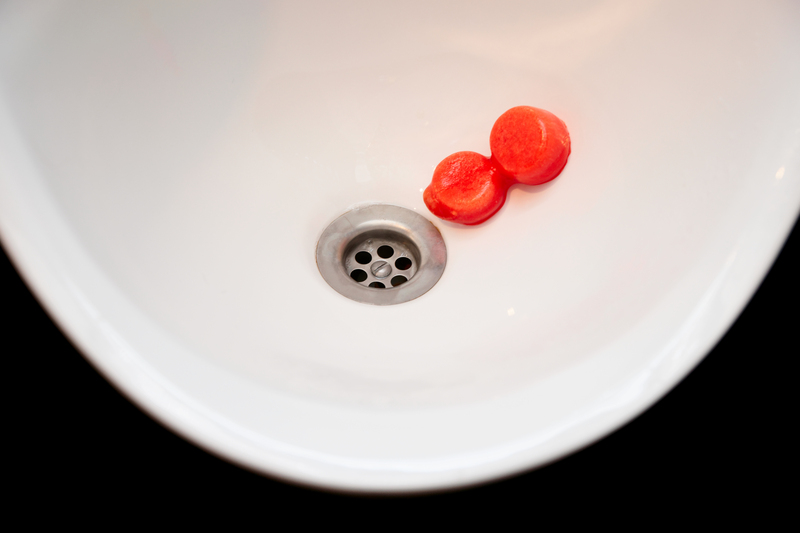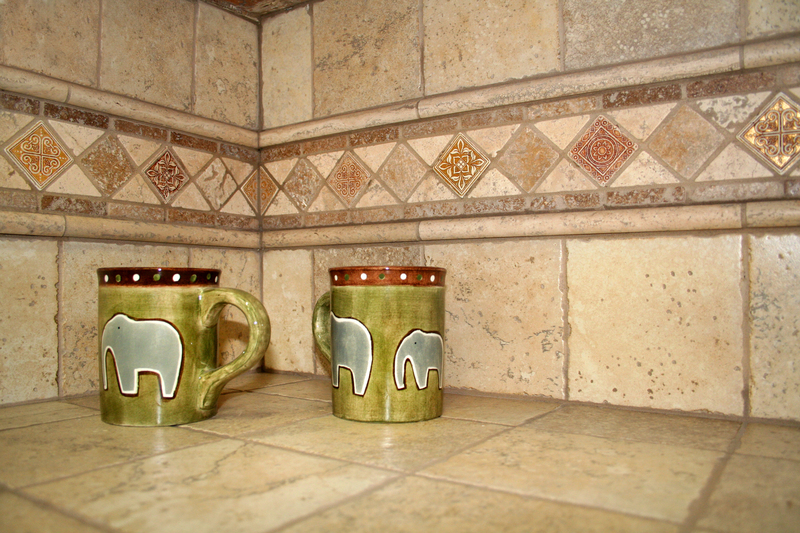Create a Fresh Space with a Mold-Free Bathroom Routine
Posted on 27/06/2025
Create a Fresh Space with a Mold-Free Bathroom Routine
If you've ever walked into your bathroom and noticed a musty smell or black spots on the tiles, you're not alone. Mold is a persistent problem in many homes, but it doesn't have to be inevitable. Maintaining a mold-free bathroom is about developing the right habits and using smart, preventive strategies. This comprehensive guide will teach you how to create a fresh space with a mold-free bathroom routine, ensuring your sanctuary remains healthy, clean, and inviting.
Why Is Mold So Common in Bathrooms?
*Bathrooms* provide the perfect conditions for mold growth--heat, humidity, and moisture. Combine these factors with poor ventilation and organic material (like dust, hair, and soap scum), and it's clear why mold loves to make itself at home.
- Humidity: Hot showers and baths increase moisture in the air, giving mold spores a chance to settle.
- Lack of airflow: Closed doors and small windows keep damp air trapped inside.
- Soap and organic debris: Accumulation of soap scum, skin cells, and hair provides nutrients for mold.

The Health and Aesthetic Risks of Bathroom Mold
Living with mold isn't just unsightly--it can cause various health concerns, especially for those with sensitivities, allergies, or respiratory issues. Symptoms can range from sneezing and coughing to more serious respiratory problems. Additionally, mold damages bathroom surfaces, causing discoloration, odors, and even structural problems over time.
Developing a Mold-Free Bathroom Routine
A proactive cleaning routine is the key to conquering bathroom mold. Let's break down the process into daily, weekly, and monthly steps to make it simple and sustainable.
Daily Habits for a Mold-Free Bathroom
- Ventilate Properly: After every shower or bath, run the exhaust fan for at least 30 minutes. If you don't have a fan, open a window slightly to allow moist air to escape.
- Dry All Surfaces: Use a squeegee to remove water from glass doors and tiles. Wipe down countertops, sinks, and faucets with a dry cloth.
- Hang Towels to Dry: Always hang towels and bathmats spread out after use. Avoid leaving them crumpled on the floor.
- Keep Shower Curtains Open: Whether you use fabric or plastic, spread the curtain open fully after each shower so it can dry quickly.
Weekly Bathroom Mold Prevention Tasks
- Scrub Tiles and Grout: Use a bathroom cleaner or a solution of vinegar and water to gently scrub away any buildup. Pay special attention to grout lines and corners, where mold is most likely to appear.
- Wash Bathmats and Towels: Hot water and regular laundering prevent the buildup of mold spores on soft items.
- Clean the Shower Curtain: Many plastic and fabric curtains can be machine washed. Check tags and instructions.
- Disinfect Drain Covers: Remove hair and debris to prevent backups and stagnant water.
- Wipe Down Faucets and Handles: Mold can form on soapy, moist surfaces--give these areas a quick clean.
Monthly Mold Control for a Fresh Bathroom
- Inspect for Leaks: Check under sinks, around the toilet, and behind fixtures for any signs of leaks.
- Deep Clean Grout: Use a baking soda and water paste for stubborn stains and moldy areas.
- Wash Shower Liners and Window Coverings: These are often overlooked sources of mold spores.
- Check Ventilation Fans: Wipe off dust from fan covers and ensure they're working efficiently.
- Declutter Bathroom: Remove unused toiletries and clean behind items to eliminate hidden mold traps.
Effective Products for a Mold-Free Bathroom
Choosing the right cleaning supplies can make all the difference in your bathroom mold prevention routine. Consider these top picks:
- Vinegar: An effective, natural mold-killing agent. Mix 1 part vinegar with 1 part water in a spray bottle for easy use.
- Baking Soda: Great for gentle scrubbing and odor removal.
- Hydrogen Peroxide: Kills mold spores while disinfecting surfaces. Use with caution and never mix with vinegar.
- Commercial Mold Remover: Necessary for severe cases; always follow package instructions for safety.
- Microfiber Cloths: Pick up more moisture and residue than regular cloths, minimizing the spread of spores.
Upgrading Your Bathroom for Mold Prevention
If you're planning a renovation, using mold-resistant materials can provide long-term benefits. Consider investing in these features for a truly mold-free, fresh bathroom space:
- Mold-Resistant Drywall: Especially important in walls surrounding showers, tubs, and sinks.
- Proper Ventilation: Ensure you have a high-quality exhaust fan with the right capacity for your bathroom's size.
- Waterproof Paint: Acts as an extra barrier on ceilings and walls vulnerable to splashes.
- Sealed Grout and Caulking: Reduces water infiltration--reapply sealant annually or as directed.
- Non-Porous Surfaces: Avoid carpets, use tiles or synthetic materials instead in wet areas.
Bonus Design Tips
- Open Shelving: Improves airflow and makes daily cleaning simpler.
- Minimalism: Reduces places for mold to hide and accumulate.
- Choose Light Colors: Light-colored walls and tiles make it easier to spot mold early.
How to Remove Bathroom Mold Safely
Even with the best intentions, you might encounter some mold in hard-to-reach places or after a lapse in routine. Here's how to handle it safely:
- Wear gloves, goggles, and a mask to protect yourself from spores.
- Ventilate the space as much as possible.
- Apply a cleaning solution: Use vinegar, hydrogen peroxide, or a mold remover.
- Scrub thoroughly with a brush, focusing on grout lines and corners.
- Rinse the area well and dry completely with a clean towel or rag.
- Dispose of heavily moldy items (like old shower curtains or caulking).
*Note:* For extensive mold covering a large area (greater than 10 square feet), consult a professional. Mold can be hazardous and sometimes points to deeper, structural issues.

Frequently Asked Questions: Keeping Your Bathroom Fresh and Mold-Free
1. How often should I clean my bathroom to prevent mold?
It's best to set a consistent cleaning schedule. Daily habits (like drying surfaces), weekly scrubbing, and monthly deep cleans form the foundation of an effective mold prevention routine.
2. Does bleach kill bathroom mold?
Bleach can kill visible mold on non-porous surfaces, but it isn't always the best choice for grout or porous materials. Vinegar, hydrogen peroxide, and commercial mold cleaners are often more effective for a long-term solution.
3. Why does mold keep returning after I clean it?
Recurring mold indicates there's a persistent problem with humidity, leaks, or ventilation. Address underlying causes--such as improving airflow or fixing leaks--along with regular cleaning to eliminate the cycle.
4. Is my bathroom fan enough to prevent mold?
*An effective exhaust fan* is crucial, but must be run long enough after every shower or bath. Clean the fan vents monthly and make sure your fan's power is appropriate for your bathroom's size.
5. Can houseplants help in a bathroom?
Some houseplants absorb humidity or filter air, but they also add organic material that could feed mold. If you use plants, choose those suitable for moist environments and water sparingly.
Summary: Enjoy a Mold-Free, Fresh Bathroom Space
A mold-free bathroom routine is about more than just cleaning--it's a lifestyle adjustment aimed at reducing moisture, increasing ventilation, and staying proactive. By implementing daily and weekly habits, using the right products and materials, and catching problems early, you'll transform your bathroom into a healthier, fresher space.
- Keep surfaces dry after every use
- Maintain excellent airflow and ventilation
- Clean regularly with mold-fighting solutions
- Address repairs and leaks promptly
- Upgrade materials for long-term protection
With a bit of effort and the tips outlined in this guide, you can easily create a fresh space with a mold-free bathroom routine--ensuring your bathroom stays beautiful, comfortable, and healthy year-round. Implement these strategies today, and breathe easy in your refreshed, mold-free bathroom sanctuary!




